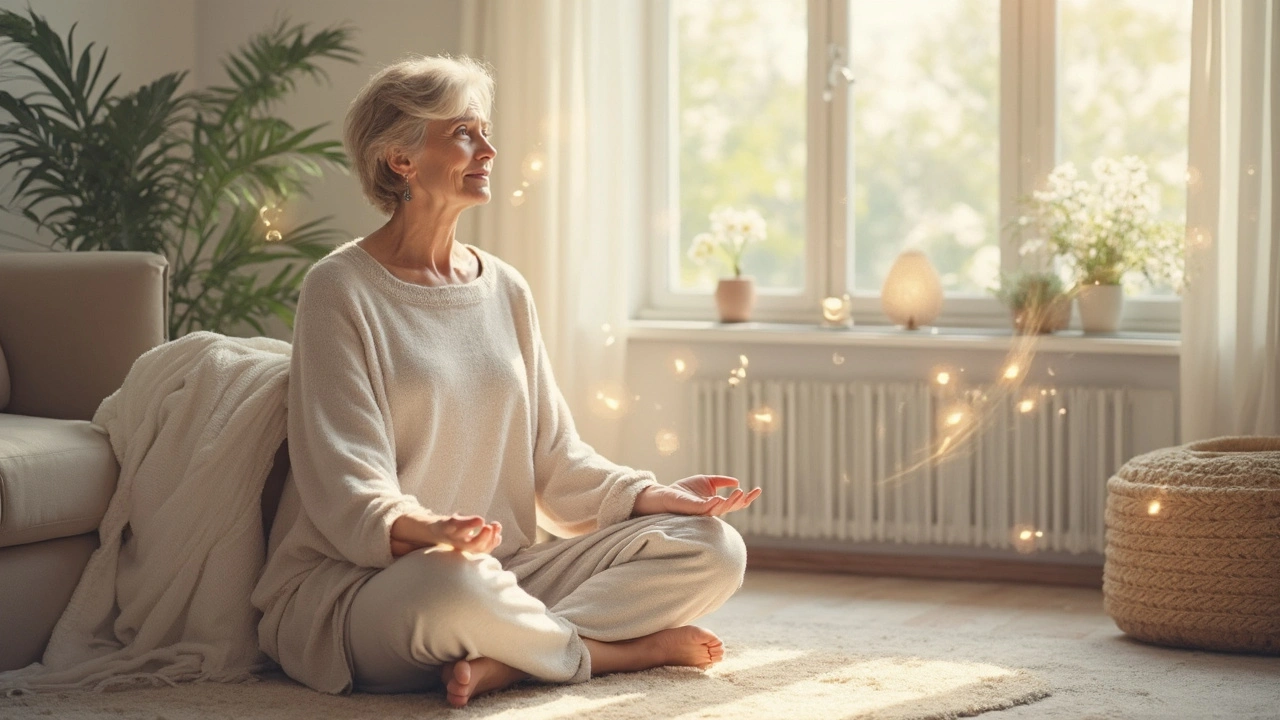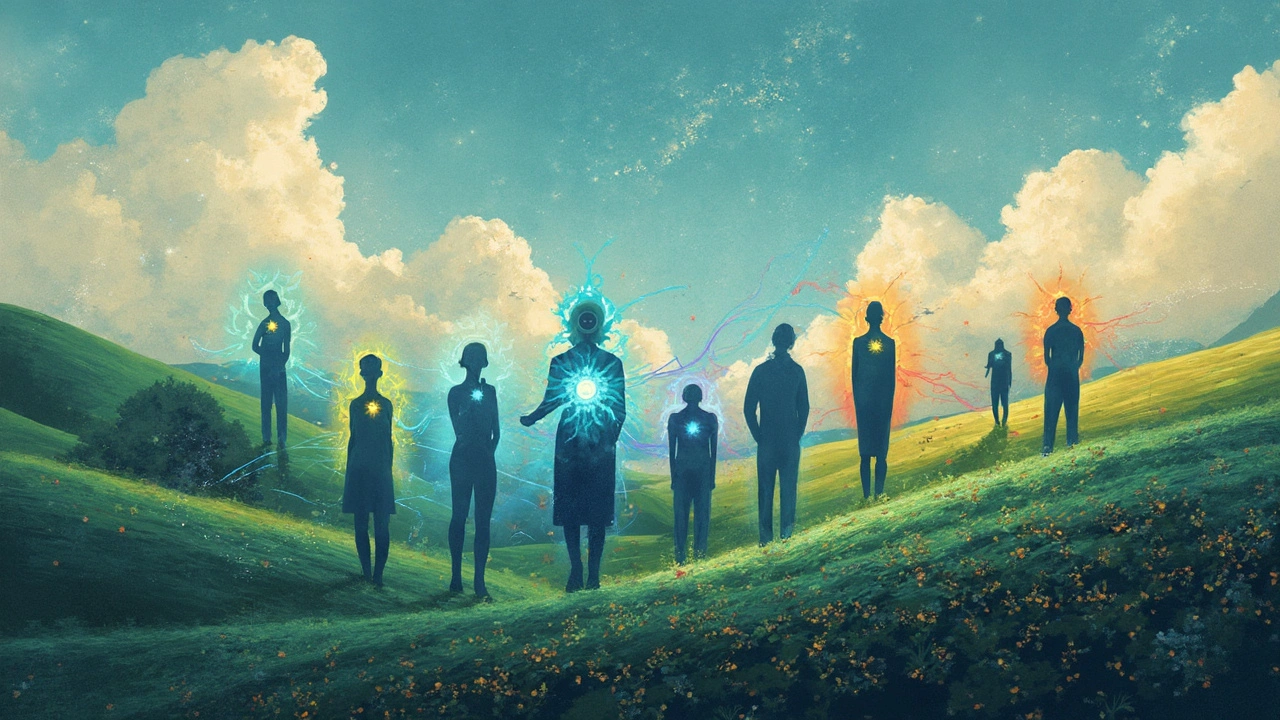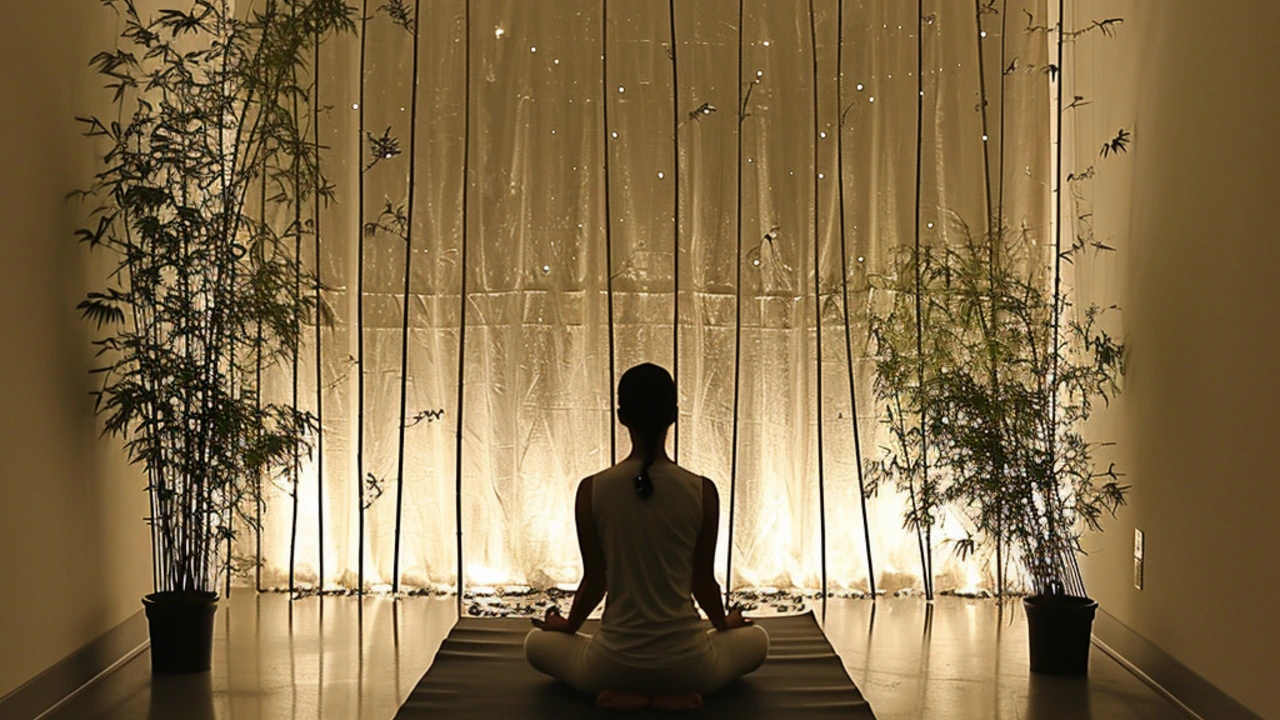Reiki Massage Benefits: Unlocking Healing Power Through Touch

Close your eyes for a second and imagine someone hovering their hands over you—not even touching, just channeling a calm, focused energy. Feels odd, right? Now, picture leaving that room feeling lighter, calmer, and like something invisible just released a knot inside you. That’s the kind of weird, wonderful story you hear from people after a reiki massage. Some folks in Toronto swear it pulled them out of anxiety’s grip. Others say it helps chronic pain in ways their medications can’t. So, why does this gentle approach feel so powerful to so many people? And can a practice developed in Japan nearly a century ago really make modern stress melt away?
What Is Reiki Massage and How Does It Work?
Think of reiki as tuning the strings on a guitar. The chords are your body’s energy, and the practitioner just wants everything humming in harmony. Reiki isn’t like a typical massage—you usually stay fully clothed, and there’s often little or no direct touch. The main idea is that a trained practitioner channels what’s called ‘universal life force energy’ with their hands. This isn’t just poetic language; in Japanese, ‘rei’ means universal and ‘ki’ means life energy.
The technique started in Japan with Mikao Usui back in the 1920s. He believed that stress, emotional wounds, or plain old exhaustion could leave people energetically off-balance. By placing hands just above the body, or using very gentle touch, a reiki practitioner tries to move energy where it’s stuck and restore balance. People sometimes describe feeling warmth, tingling, or a pleasant floating sensation during a session. While modern science doesn’t (yet) measure ‘ki’ with gadgets or lab tests, that hasn’t stopped reiki from growing popular as a form of complementary therapy both in hospitals and private studios.
Here in Canada, the Canadian Reiki Association sets guidelines for training, and you’ll find reiki practitioners offering their services everywhere from yoga studios to wellness clinics. Toronto’s own Mount Sinai Hospital even integrates energy therapies (including reiki) to help cancer patients manage pain and anxiety. This isn’t just a New Age fad—researchers at the University of Alberta published a 2017 review noting that reiki can reduce pain and fatigue for cancer patients. They found that people reported lower heart rates, improved mood, and less need for pain medication after sessions.
So, is it all a placebo effect? Here’s the tricky part: yes and no. Placebo is powerful, but some small studies show objective changes like reduced blood pressure, lower cortisol levels, and fewer headaches. The U.S. National Center for Complementary and Integrative Health has called for more big, rigorous studies—because it’s hard to run typical double-blind trials when the ‘treatment’ is invisible energy.
Curious what to expect? A typical session lasts about 45-60 minutes. You’ll lie down, clothed, on a massage table in a calm, low-lit room. The practitioner quietly moves around, lightly touching your head, shoulders, arms, and legs, or they may hover their hands a few inches above your body. There’s often gentle music, and you’re encouraged to relax deeply—some people fall asleep. Afterward, you may feel sleepy, refreshed, or like your mind’s been spring-cleaned.
Wondering who reiki is for? People try it to manage migraines, insomnia, anxiety, PTSD, grief, aches and pains that stubbornly linger. You don’t have to believe in ‘energy fields’ for it to work—many self-proclaimed skeptics walk out with their stress dialed down a few notches. It’s safe for almost everyone, but it’s never a replacement for medical treatment; think of it as a gentle boost to your regular health routine.
Here’s something that might surprise you: the hands-on part of reiki isn’t the main event. Practitioners often say they’re just a conduit, not a ‘healer’ or magician. The body does the real work—they’re just helping remove the static so your system can reboot.
Some people notice effects after just one session, while others need three or more. Consistency matters. Regular sessions, spaced weekly or monthly, can help reinforce the relaxation response and feel like preventative maintenance for your nervous system.

The Science, Stories, and Skepticism Around Reiki Massage
Here’s where it gets interesting: reiki sits at that weird intersection between science and the things you can’t see or measure—yet. You’ll meet people who swear it changed their life, and others who roll their eyes at the word ‘energy healing.’ But a closer look shows reiki’s not just fueled by wishful thinking and good intentions.
Let’s break down some facts. A 2019 study published in the Journal of Evidence-Based Integrative Medicine looked at hospital patients in Connecticut: 87% said reiki helped them feel more relaxed during their hospital stay, and 94% said they’d recommend it to others. Reduced stress, less pain, and better sleep got top marks. Here in Toronto, some reiki therapists have long waitlists. People from all walks of life book sessions when anxiety spikes, when grief feels overwhelming, or even to prep before big exams or job interviews. They’re not just new-age believers—many are firefighters, tech workers, even skeptical doctors and nurses looking for that rare reset button.
What’s happening on a biological level? One theory credits the parasympathetic nervous system, the branch that encourages your body to slow down, repair, and digest. Reiki appears to quickly shift people from ‘fight or flight’ (the stress mode) into ‘rest and repair’ mode. Toronto’s Centre for Addiction and Mental Health once studied how reiki helps people with post-traumatic stress: patients not only felt calmer, but also noticed steady drops in muscle tension and intrusive thoughts. These are concrete changes, not just a nice placebo.
Then again, critics point out the lack of big, gold-standard studies with thousands of people and double-blind controls. Science prefers numbers, scans, before-and-after bloodwork: things you can stack up like bricks. Energy fields? Those don’t play by lab rules. Still, countless brainwave scans show that reiki brings about the kind of deep relaxation found in meditation or very gentle yoga—reduced beta waves, an uptick in alpha and theta, the brainwaves linked to creativity and deep daydreaming.
| Benefit | Percentage of Patients Reporting Improvement | Study Location (Year) |
|---|---|---|
| Stress Reduction | 87% | Connecticut Hospital (2019) |
| Pain Relief | 49% | Alberta Cancer Study (2017) |
| Better Sleep | 62% | Connecticut Hospital (2019) |
| Less Fatigue (Cancer Patients) | 31% | Alberta Cancer Study (2017) |
What’s behind the rising popularity? Let’s be real: People are burnt out. The World Health Organization now tags “chronic stress” as a modern health epidemic. Our brains aren’t built for endless notifications, rush-hour traffic, or the isolation of living in a big city. People crave human touch—even the gentle, non-invasive touch that reiki offers. Toronto’s busy pace leaves many feeling out of sync with themselves, and for some, reiki is a quiet anchor that keeps them grounded. It’s easy to shrug at ancient practices, but there’s a reason they stick around when so many trends fade.
Still, reiki isn’t for everyone. Some people walk in and feel nothing but a slight sense of drowsiness and awkwardness. But even those experiences can offer something real: a rare hour to disconnect, breathe more deeply, and listen to your own thoughts. At worst, you get a nap. At best, something in your body shifts, and you get back a little peace you thought was gone for good.
If you’re curious but skeptical, talk to a reiki practitioner and ask about their training. Look for certifications from groups like the International Center for Reiki Training or the Canadian Reiki Association. Booking with someone who takes their practice seriously and keeps up with workshops and ethical guidelines will help you separate the pros from the fakes. True reiki experts don’t promise miracle cures, but they know how to create a safe, respectful, and supportive space.
Stories from the field pop up everywhere. There’s the Toronto artist who used reiki to bounce back from creative burnout. The single dad who tried it after traditional therapy left him stuck. The cancer survivor who says reiki gave her back a sense of control she thought she’d lost. People stay for the results, not the theory.
And if you want a little science with your curiosity, remember: The body is wired to respond to gentle, intentional touch. Touch triggers oxytocin release (the “bonding hormone”), lowers stress hormones, and can bring down your blood pressure—researchers at Carnegie Mellon University put this to the test and saw measurable effects, regardless of the healing tradition involved. Your body doesn’t care about labels, it just responds. And that’s why reiki, despite all the debates, still has a seat at the wellness table.

Tips for Getting the Most Out of Reiki—and Bringing Light Touch Into Your Life
If the idea of reiki sparks a little curiosity, good news: you don’t have to go all-in right away. Trying a single session is like dipping your toes before taking a swim. If you want to explore more deeply, here are some smart ways to make the most of the experience—and maybe even bring a bit of reiki’s gentle touch into your daily routine.
- Start by researching your practitioner. Ask about their training—look for at least Level 2 certification, which means they can practice on others. Good reiki therapists are happy to talk about their background and answer any questions, big or small.
- Wear comfy clothes and skip heavy meals or caffeine before your session. You want to feel relaxed, not jittery or stuffed.
- Come with an open mind. You don’t have to believe in energy fields—just give yourself permission to relax and see what happens, no expectations or pressure for ‘fireworks.’
- Decide if you want physical touch or prefer the hands-off approach. Let your practitioner know about any sensitive areas or if you’d rather they keep their hands above you.
- After your session, drink a big glass of water. Some people feel tired, while others buzz with energy, so clear your schedule if you can—give yourself space to absorb the effects.
- Journal about how you feel, both right after and in the days ahead. Notice mood shifts, changes in sleep, or if any old aches settle down. Your body’s cues are unique—honoring them helps you track subtle changes over time.
- Curious to practice reiki on yourself? Ask your practitioner about self-care routines. Even basic techniques like mindful breathing, gentle self-touch on your heart or belly, or short meditations can help you tap into the calming vibe reiki encourages.
- Want to DIY a bit? Find a quiet space, lie down, and gently rest your hands on your chest or stomach. As you breathe slowly, imagine warmth flowing from your hands into your body. Don’t stress about ‘doing it right’—just be present with how you feel. Tiny daily habits like this help regulate stress even on busy days.
- Look for community classes or reiki shares in Toronto—many studios offer group sessions, usually for a lower cost. You’ll meet others on the same journey and pick up tips from experienced practitioners.
Most importantly, trust your instincts. If a session leaves you feeling unsettled or the practitioner just feels ‘off,’ it’s okay to try someone else. Healing, whether physical or emotional, happens in its own time and doesn’t follow a straight line.
Reiki reminds us that healing isn’t only about pills, scans, or surgery. Sometimes, it’s about pausing long enough to let yourself reset—about setting aside the endless doing, and just being. *Reiki massage* opens up a door to that kind of gentle pause. In a wired, rushed world, that chance to recalibrate—to let your mind and body take a breath—might just be more powerful than we ever realized.





